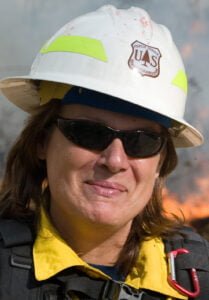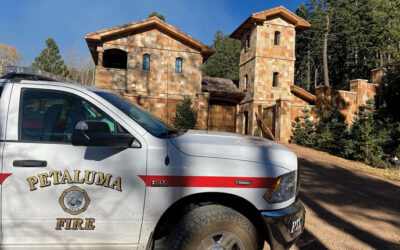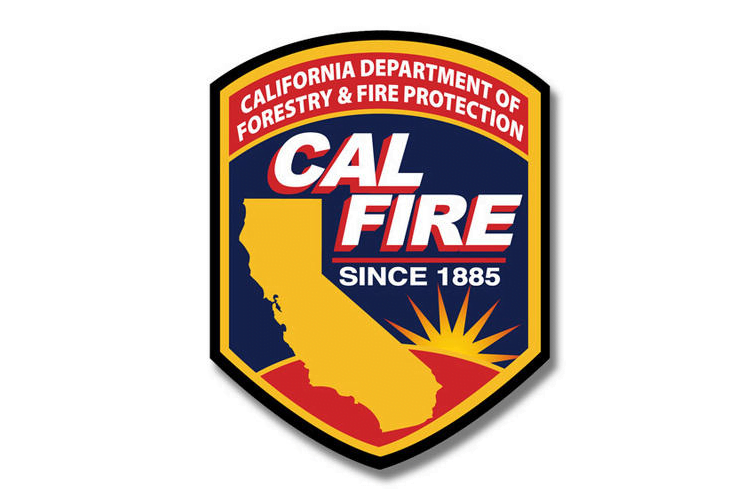“Gas, she needs gas. Get her some gas, NOW!” That was the Operations Chief yelling at the Logistics Chief because I was on my division about 50 miles from the ICP, and I was nearly out of fuel for my rig. When I heard the Ops Chief yelling on the radio, I felt embarrassed, but I had brought this situation on myself. It wasn’t my fault that I was low on fuel, but I might have incited the Ops Chief. Let me explain.
In 1999, I was the first Division Supervisor assigned to a complex of desert fires in northern Nevada. I had been dispatched from my unit in California. And in those days, if we got a call at midnight, we started driving by 0100. It was before the days of paying attention to our work/rest ratio. Some might say it was the good old days. It wasn’t. We were just dumb. It was like a contest to see how many hours you could get on one CTR. Remember my earlier story about “Sport Bitching?” Well this was in the days of “Sport OT.” And on this assignment, I might win the prize for OT. But I don’t want to get ahead of myself.
When I arrived at the BLM office in Battle Mountain, Nevada, there were a few resources trickling in. The unit had been hit by a massive lightning storm, and now there were dozens of fires burning across the landscape. As a matter of fact, there were so many fires, the agency didn’t even know how many fires there were. A type 2 IMT had been ordered, and their resources were just starting to arrive. But I had already been briefed by the local AFMO and was raring to go. I mean, I had been up since midnight and had driven 500 miles to get there. Now around 0900 I wanted to start fighting fire. I found one of the Ops Chiefs, and he pointed to a distant smoke column. “Go scout that fire and see what you can do.” That was it. Ok, I like vague directions like that. It leaves a lot to my interpretation.
As I made the 30 minute drive out to the fire, I see two blue parachutes coming down right in front of my truck. “Ditch your chutes and jump in,” I yelled to the two jumpers that left the Battle Mountain airport about the same time as me. Had I known they were coming to “my” fire, I would have driven them to the fire with me, but of course they’d rather put another hashmark on the board for an operational jump. Oh well, now there were 3 of us to IA this fire.
We started swatting the fire creating an anchor at the base of the small mountain range. We kept at it and were making decent progress. But I could see there were thousands of acres on fire and at this rate we’d be chasing the fire all the way to Utah. We needed a plan. I left my jumpers to continue swatting the fire while I drove ahead to figure out where this fire was burning and what kind of resources might be needed.
By 1600 I was back in Battle Mountain to find the IMT creating a decent ICP at the empty grade school. I found the Ops Chief and told him I had a plan, but I’d need some engines, a water tender, maybe a crew or two and a dozer. He was dealing with a dozen other fires while I was enthusiastically explaining my plan. He wasn’t convinced. After persistently arguing with him, he finally relented and said, “you can take whatever’s left in staging.”
It was still light out when my put-together task force was arriving back on the fire. Now I had two jumpers out in the flats swatting the cheat grass and me, 2 type 3 engines and a water tender heading up a canyon to try to cut off the fire from spreading further up the mountains.
That night 12 firefighters put in wet lines, scratched some handline, burned out thousands of acres of moisture stunted sage and cheat grass and had a black line around that fire. It ended up at about 12,000 acres when the sun came up the next morning. It was one of the best work periods I’d ever had. I left the crews on the mountain to rest up before they drove back to the camp to find a place to sleep for the day.
When I arrived at the ICP around 1000, I found the Ops Chief and said, “Ok, that fire’s done.”
“No, no,” he said. “You still have this area on the northwest side down in this drainage.”
“Nope, that’s done,” I replied.
“What about up on this ridge,” as he pointed to the map on the wall?
I showed him my map and the markings for handline, burn outs, swatted black line and wet line. That fire was done. I wasn’t bragging. I was just feeling pretty good about the work we did. We kicked that one’s butt.
The Ops Chief was impressed and maybe a bit in disbelief. “Get your folks bedded down in the motel and get some rest. You’ll come back on in the morning. By the time I was off the clock, I had been working for about 36 hours including my 500 mile drive from California.
All my folks were back in camp and bedded down to get some rest.
The next day I was at briefing, and I was assigned as a Division Sup at another fire about 40 miles south of town and the ICP. Once you left the highway, it was another 10 or so miles through rolling juniper hills and the infamous Nevada puff powder. It was like driving through two feet deep mud, even though it was actually dry powder. There’s no keeping it out of your rig. It doesn’t care that your windows are closed tight. It’s like the perfect way to get a lung disease in 2 easy steps.
That next fire wasn’t quite as easy to put out. It was bigger and with heavier fuels. But there were lots of resources on that fire. And my Division was staffed with crews, engines and dozers. We were getting after it. By dark, there was no good reason to go all the way back to camp and the ICP. I spoke to Ops and he relented when I said we could just keep punching in line and make progress on this fire.
But after a couple days of these coyote tactics we were running low on fuel. We had been putting in line and burning for days. I had already called Logistics a few times requesting fuel. The last time I called, I got a bit frustrated when the Logistics guy told me there were no more jerry cans available in town. In exasperation and a bit of unprofessionalism, I yelled, “you’ve got an air force sitting on the tarmac in Battle Mountain. Take a plane to a Salt Lake City Lowes store and buy some damned gas cans!” I was frustrated, and that frustration came out in a raised voice. But the worst part came next. The Ops Chief who was loving the progress I had been making on the multiple fires and who was supporting me and my resources jumped in on the radio traffic yelling… “Gas, she needs gas, get her some gas Now!” When I heard the Ops Chief saying the same thing and in the same manner as me, I didn’t like it. I mean, I loved that he was supporting me but it made me cringe a bit. Yikes, is that what I sounded like?
Coincidentally, within 6 hours, Logistics had delivered multiple jerry cans of fuel for the resources on the line.
When I finally made it back to the ICP a few days later, my truck was brown from all the puff powder. The paint was actually a bright yellow under the dust but no one could see. I had to stop multiple times a day to knock the dust from the air cleaner to keep the engine running. When I parked my “brown” rig in front of the ICP, I noticed two lines of jerry cans and drip torches lining the sidewalk leading from the parking lot to the front doors. I wasn’t sure what that was about. When I opened the doors to the ICP, the radio and logistics folks informed me with wry smiles that the rows of torches and jerry cans were there for my benefit.
You know how on one fire assignment you can come away with dozens of stories and many lessons learned? This was one of those fires for me. There were so many odd and funny events on one 12-day assignment. But there were a few important lessons for me too.
When those few resources and I contained the fire that first day, I had earned my stripes with the Ops Chief. From then on, if I asked for something, he knew I really needed it, and I’d get the work done. At the time, I wasn’t aware of the lesson. But in hindsight, I can see that the successes in my career came on the backs of the previous successes. The foundation of a successful career is your earlier performance. I didn’t realize that the respect I earned came as a result of my attitude and ability to achieve organizational goals. It seems really obvious to me now, but it wasn’t obvious to me all those years ago.
As a supervisor, I loved the folks who were committed to getting the job done. When I was an Ops Chief, I had a Division Supervisor who was a great guy but sometimes he had so much trouble holding on to his division. For some reason if we were going to have slop overs, they were going to be on his division. Once I had to send in another Division Supervisor to catch the fire on his piece of line. The substitute Division was a go-getter. He was like the kid on the side lines saying, “put me in coach, put me in!” I loved that attitude. And when I did put him in, he always performed.
When I was like the kid pleading with the coach to “put me in”, I didn’t realize what kind of an impact I was having on my boss, the organization and my career. I just wanted to go in because it was fun and I wanted to do well.
No matter where you sit on the engine or crew, be like the kid saying, “put me in, coach, put me in.” It will make a difference in your career. It made a difference in mine.
More stories are available at BobbieOnFire.com and my entire memoir, Both Sides Of The Fire Line is available from Chicago Review Press or any bookstore.
Now Available
Both Sides of the Fire Line is Bobbie Scopa’s uplifting memoir of bravely facing the heat of fierce challenges, professionally and personally. It’s available now.
Order from Amazon Order from Barnes & Noble

 Bobbie Scopa started her career as a seasonal firefighter in 1974. After graduating from Arizona State University, she went on to work in fire and natural resource management. Eventually she left the wildand agencies to work full time for a structure fire department. She finished her Masters in Forestry at NC State then went back to the US Forest Service and BLM eventually becoming the Assistant Regional Fire Director in Region 6. Bobbie has spent many years working as a type 1 and 2 Operations Section Chief. You can listen to Bobbie tell audio stories from her long career at BobbieOnFire.com. She has also recently completed her memoir titled “Both Sides Of The Fire Line”. It will be available through Chicago Review Press late summer of 2022.
Bobbie Scopa started her career as a seasonal firefighter in 1974. After graduating from Arizona State University, she went on to work in fire and natural resource management. Eventually she left the wildand agencies to work full time for a structure fire department. She finished her Masters in Forestry at NC State then went back to the US Forest Service and BLM eventually becoming the Assistant Regional Fire Director in Region 6. Bobbie has spent many years working as a type 1 and 2 Operations Section Chief. You can listen to Bobbie tell audio stories from her long career at BobbieOnFire.com. She has also recently completed her memoir titled “Both Sides Of The Fire Line”. It will be available through Chicago Review Press late summer of 2022.


